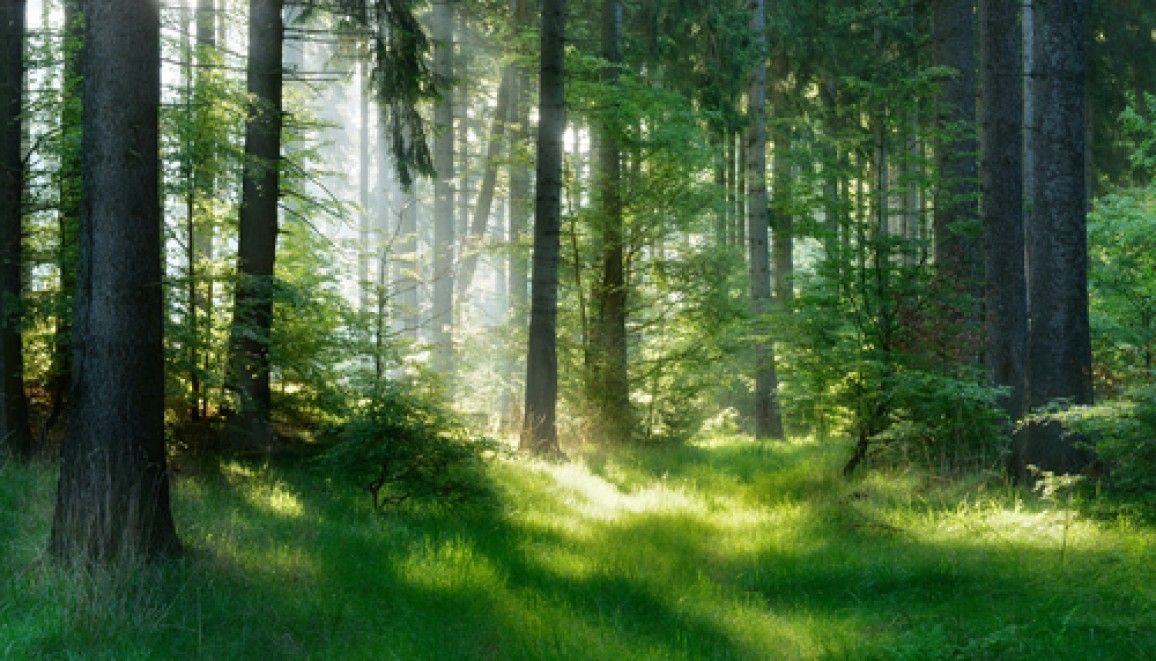All About Green Burials
“Green burials” or “green funerals” are certainly a hot topic right now, and environmentally friendly options for burials are being requested more and more. But the subject can be confusing, so we’re breaking it down here to help you decide if a green funeral is right for you, and if so, just how green?
What Is a Green Funeral?
A green funeral is one that has a more limited impact on the environment. In the “greenest” expression of a burial, the body would be unembalmed and buried in a simple shroud, an eco-friendly casket, or even a tree pod. The burial itself would take place in a green cemetery or other natural setting. Traditional headstones would be avoided in favor of natural stones, plants or other markers.
But as with most topics relating to environmental friendliness, you can choose varying degrees and options for a natural burial, from a more hybrid approach to evaluating every detail and making low-impact decisions all along the way. Here’s a primer on how to have a green funeral on your own terms.
Aquamation: A Greener Form of Cremation
Benefits of Green Burial
While opting to have a green burial might require a bit more thought and planning, there are obvious benefits.
- Reduce carbon footprint. Traditional burial puts tons of wood, metal, steel and gallons of embalming fluid into the ground each year. A natural burial limits these elements and aims to let the body return to the earth in a more organic process.
- Save money. The average green burial costs between $2,000-$3,000 whereas the traditional funeral averages $8,000-$10,000. Of course you can choose to spend more or less on a green burial, since you can choose to make it simple or very elaborate (add flowers and a horse-drawn carriage for example). But in general, a green burial will be more economical as you are saving on the cost of embalming, an expensive casket, a vault or liner, and a headstone.
- Personalize a sendoff in a way that honors the natural world, and that feels good. Green funerals often find people gathering in nature, honoring natural processes, and connecting to our relationship with the earth and the seasons. This can have a healing and comforting effect on those grieving.
Planning a Green vs. Traditional Funeral
People often ask us, what’s different between a green funeral and a more traditional tribute? It mainly comes down to processes and materials.
The Viewing. One of the biggest differences between green funerals and their more traditional counterparts centers on the idea of a viewing. Over the last century we have developed a preference for viewing our loved ones who have died in a way that preserves them one last time. Chemicals, makeup and processes have been created to help us “restore” a body, and many find comfort in this. But those chemicals and processes can transmit toxins to the earth.
With a green burial, embalming and other techniques of preservation are not used. Sometimes for this reason a viewing is not held. More recently, green funerals may include a home viewing, where the body is kept cool with dry ice for a number of days to allow mourners to come and pay respects. Still others choose not to focus on viewing the body as a part of mourning at all.
The Type of Casket. Another major difference between traditional and green burials is the casket itself. Traditional caskets often include non-biodegradable and even toxic elements. Green funerals require that burial takes place in a non-toxic, biodegradable casket or shroud.
Clothing. In a truly green burial, clothing--and accessories!--matter. Since the idea is to return to nature, you must be thoughtful about the clothing that is chosen. Biodegradable garments made from untreated natural fiber, such as cotton, linen or wool are perfect. If you don’t have any clothing that fits this criteria, you can purchase an organic burial shroud.
Tip: Remember to avoid synthetic features such as elastic, plastic buttons or metal zippers.
The Grave Site. Eco-friendly cemeteries will not allow vaults or liners, which are sometimes required for burial in traditional cemeteries.
How to Find a Green Cemetery
The Green Burial Council is a great place to find resources for green cemeteries and natural burials. Here are a few notes on green cemeteries:
- Hybrid Traditional-Green Cemetery. These are traditional cemeteries that have designated a green section. While the applicable sections will follow the guidelines of the green cemeteries in general, they are sometimes more flexible.
- Natural Burial Grounds/Green Cemetery. Here, the entire cemetery will have sustainable protocols that are eco-friendly, minimize waste and conserve energy. Rules and restrictions related to the environment will be more specific.
- Conservation Grounds. These cemeteries are created in partnership with a conservation group that maintains the grounds and works to best protect the land. Generally green practices are required throughout.
3 Types of Green Funeral: Which Is Right for You?
Let’s face it, we all have varying levels of comfort when it comes to green burials. Here are a few suggestions depending on how environmentally friendly you choose to be.
Green Burial Level 1: Blended Funeral
For those who realize that traditional burials can be quite toxic for the environment, but who can’t or don’t necessarily want to opt for a fully green burial, here are some minor changes you can make:
- Eliminate embalming. Choose to have a closed casket if a viewing is necessary.
- Choose a greener casket. There are plenty of beautiful options. If, however, you want something more traditional, opt for a plain wooden casket over a metal or one that has been treated with stains or polishes and metal closures.
Tip: This type of hybrid green funeral may be ideal for families who already have a burial plot in a traditional cemetery or who may have opposing views from others also involved in arrangements.
Green Burial Level 2: Make Conscious Choices All Along the Way
For those interested in going a shade greener, the best way to find your way is with the help of a professional committed to green burial practices.
- Find a green funeral provider. Working with a funeral home and/or funeral director who understands green funerals can make the process much easier.
- Ask for a green cemetery. It’s likely they’ll have rules requiring you to follow best practices when it comes to the casket, clothing, headstone and other details, all of which will help you help the planet even more.
- Forgo a viewing. Instead, opt for an outdoor gathering at the grave site.
- If you’ll use flowers, go local. Many eco-friendly caskets feature woven designs, perfect for tucking in flowers, leaves, or garlands. If you have a garden, consider clipping blooms or greens for a personal touch.
- Pass out seed packets or baby saplings to those attending. This lets everyone know that the planet is a priority, and creates a ritual for those grieving to create new growth.
Green Burial Level 3: A Commitment to Earth-friendly Practices
To have a completely green funeral, consider these ideas to really minimize your impact.
- Host a home funeral (if permitted in your area). Work with your funeral provider to keep your loved one at home for a day or two.
- Decorate their bed with flowers and greens.
- Choose a completely green or natural burial site, and abide by all their requirements.
- Choose a full body mushroom suit or an organic burial pod.
- Opt for a horse-drawn carriage or even use a decorated wagon to transport the person who died to the place of burial.
- Keep the travel footprint minimal. Add a virtual or livestreaming component for those who might’ve traveled from afar.
- Encourage donations to an environmentally focused organization. You can include this info in an online memorial shared with friends and family.
Tip: In Connecticut, Indiana, Louisiana, Michigan, Nebraska, New York, and Utah, legislation makes it necessary to use a licensed funeral director if you plan to have a home funeral.
Whatever is right for you, choosing some form of green funeral or natural burial is a wonderful idea. If you need help in planning an eco-friendly funeral or if you have questions, reach out to us at info@myfarewelling.com and we'll be happy to guide you.


-banner.png)





